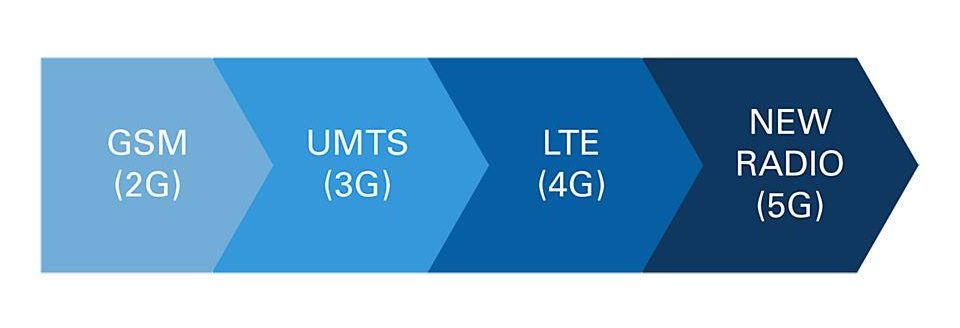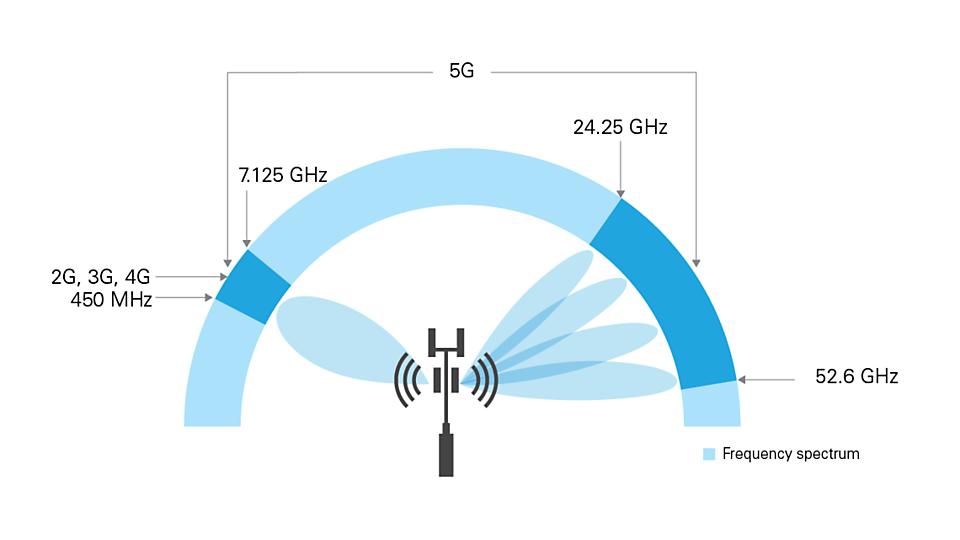Sponsor article

With Release 15, the 3GPP has adopted the first official definition for the mobile radio standard 5G New Radio. Learn more about the new standard and solutions for the design and testing of 5G technologies.
1. New Radio (NR) is the name for the air interface
The term New Radio or 5G NR was defined by the 3rd Generation Partnership Project (3GPP) for release 15. NR refers to the fifth generation mobile radio standard and is the successor of LTE (4G) and UMTS (3G). The draft specification for Release 15 was adopted in December 2017 and is expected to be finalized by mid-2019. However, Release 15 is only the beginning and represents the first phase of the 5G mobile communications standard. Release 16, which is planned for 2019, will then provide the specifications for the second phase of 5G.
2. 5G will use a new frequency spectrum
The question of which spectrum 5G networks should use in the future was the subject of heated debate, but a clearer picture is slowly emerging. Already at the beginning of the 5G research, frequencies in the mm wave range were traded as a big favorite and these will definitely be part of the game. However, the spectrum below 6 GHz will also play an important role. Release 15 includes several new frequency ranges for NR deployments, ranging from 2.5 GHz to 44 GHz. The frequency bands from 3.3 GHz to 3.8 GHz and 4.4 to 5.0 GHz are intended for mobile applications and were practically used at the Winter Olympics in February 2018. The regulatory authorities in the USA, Europe and several Asian countries have already released this spectrum for 5G. Due to the high bandwidths, this frequency range is also attractive for mobile operators. Even though only the spectrum up to 50 GHz has been covered so far, future 3GPP releases could include frequency ranges up to 86 GHz.
3. Beamforming is a key technology
To optimize the signal strength on mobile devices, NR will use a mixture of analog and digital beamforming. In mobile communications, beamforming is not a new concept, as digital beamforming is already used by LTE networks. However, 5G requires the use of comprehensive analog beamforming procedures due to the signal propagation behavior and the smaller antenna sizes. At frequencies above 24 GHz, 5G base stations can control downlink signals more efficiently by analog beamforming at narrower beam widths. To do this, the beam must first be scanned so that the base station can determine the most effective beam position for the respective mobile device. With this method, the downlink transmission receiver benefits from higher signal strength, especially when higher-order modulation formats are used. However, beamforming also poses greater test challenges, as each beam must be individually characterized and tested. Over-the-air measurements are also required to validate the performance of the radio signals.
4. First 5G devices will continue to use LTE
The first phase of 5G NR includes both stand-alone and non-stand-alone deployments. In the non-stand-alone mode, mobile devices will use 4G and 5G networks simultaneously, as they are connected to both an LTE base station (eNB) and an NR base station (gNB). The specification for non-standalone operation was adopted in December 2017. With the finalization of Release 15, the specifications for stand-alone operation should also be finalized. In the meantime, terminals will use LTE and NR transceivers simultaneously, with the main focus on improving energy efficiency and minimizing interference.
5. The first phase still uses OFDM signals
While there are several signal forms available for 5G, the first phase of NR will be based on a variant of OFDM (Orthogonal Frequency Division Multiplexing). The OFDM version known as cyclic prefix (CP), which is used for 5G NR downlink connections, is also used as a downlink signal for LTE. However, unlike LTE, 5G NR uplinks are also based on CP-OFDM and DFT-S-OFDM signals. In addition, 5G NR allows variable subcarrier distances. While LTE subcarriers almost always have spacing of 15 kHz, 5G NR allows flexible spacing of 15 kHz x 2n. The largest possible subcarrier spacing is 240 kHz, but only for carrier bandwidths of 400 MHz.



Leave A Comment